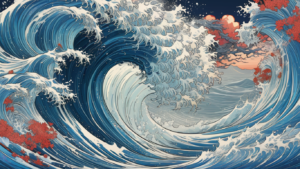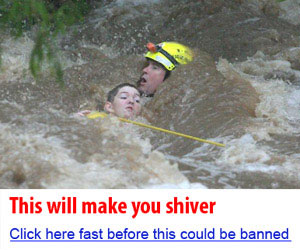RipTide Survival – Navigating Ocean’s Fierce Currents
The ocean, with its vastness and beauty, holds a formidable power beneath its serene surface. It’s in these depths that riptides lurk, unseen and often underestimated.

RipTide Survival – Mastering the Unseen Danger, is your essential guide to understanding and surviving these powerful ocean currents. With a blend of scientific insights and practical tips, we’ll unravel the mysteries of riptides, equipping you with the knowledge to safely navigate these unpredictable waters.
We’ll delve into the science behind riptides, revealing how and why they occur. Then, we’ll arm you with practical survival strategies, ensuring you’re prepared for any encounter with these hidden oceanic hazards.
Stay with us as we embark on this journey of discovery and survival, where every wave brings new understanding and every tide, a lesson in resilience. Welcome to RipTide Survival – Mastering the Unseen Danger.
What Is A RipTide?
A RipTide, also known as a rip current, is a powerful, fast-moving channel of water that can pull even the strongest swimmers out to sea. They typically form at low spots or breaks in sandbars, and near structures such as groins, jetties and piers.
RipTides are particularly dangerous due to their powerful pull and sudden occurrence. It’s essential to understand that swimming against a rip current is a common mistake that can lead to exhaustion and drowning. Instead, survival experts advise swimming parallel to the shore to escape the pull of the current.
RipTide survival strategies are crucial knowledge for every beachgoer. Some of these include:
• Recognizing the signs of a RipTide such as a
How To Identify A RipTide?
Rip currents, often referred to as riptides, are potent, fast-moving water channels that can pose significant risks to swimmers. Identifying a riptide is crucial for beach safety and survival. One key indicator is a noticeable difference in water color. A riptide may be murkier due to the churn of sand and debris. It may also appear as a darker or lighter patch, contrasting with the surrounding water.
Another sign is a break in the incoming wave pattern. As riptides channel water from the shore back to the sea, they can disrupt the rhythmic wave pattern. This disruption might appear as a flat, calm gap in the waves, misleadingly seeming safer.
A third sign is a line of foam, seaweed, or debris moving seaward. These elements, caught in the riptide’s pull, can create a visible path out to sea. However, not all riptides show these signs, and some may be almost invisible. Therefore, it is crucial to always stay vigilant and practice safe swimming habits.
Lastly, the presence of rippled or churned water amidst smoother waters can be a telltale sign. This is because a riptide’s force stirs up the water, creating a distinct, rough texture. By learning to identify these signs, you can significantly increase your RipTide Survival chances.
RipTide Survival Tips
Rip currents, commonly known as riptides, are powerful, narrow channels of fast-moving water. Understanding how to survive a riptide is critical for anyone who enjoys swimming or surfing in the ocean. The first rule when caught in a riptide is not to panic. It’s easier said than done, but it’s crucial to conserve energy and keep a clear head.
Next, remember that trying to swim directly against a riptide is a common mistake. It’s exhausting and often futile. Instead, swim parallel to the shore until you’re out of the riptide’s pull. It’s essential to understand that riptides are channels of water moving away from the shore, but they are typically narrow, so swimming to the side is often the best escape strategy.
When you’re out of the riptide, swim diagonally towards the shore, using the waves to help you. If you can’t swim out of the riptide, float or tread water. Wave your arms and shout for help. Lifeguards are trained to recognize these signs and will come to your aid.
Remember, the best way to survive a riptide is to avoid getting caught in one. Always check the surf conditions before entering the water and avoid swimming on unpatrolled beaches. Knowledge is power, and understanding the danger of riptides can save your life.
What Causes RipTides?
RipTides, also known as rip currents, are powerful, narrow channels of fast-moving water. They are primarily caused by the inconsistency in wave heights or wave breaks along the coastline. When waves break strongly in some locations and weakly or not at all in others, this can cause a rip current to form.
The formation of rip currents is also influenced by the shape and topography of the beach. Certain beach profiles can encourage the development of these dangerous currents. For instance, a steep beach slope or the presence of sandbars can contribute to the creation of rip currents.
Rip currents are not permanent and can suddenly appear or vanish depending on changing water and weather conditions. They are more likely to occur at low tide when the water is moving away from the shore.
Understanding the causes of rip currents is essential for RipTide Survival. Recognizing the signs of a rip current can help beachgoers avoid getting caught in one. Some signs include a noticeable break in the incoming wave pattern, a channel of churning, choppy water, and a line of foam, seaweed, or debris moving steadily seaward.
It’s crucial to remember that rip currents are not ‘undertow’ or ‘riptides’ that pull people under the water. They pull people away from the shore. Knowledge of these factors can significantly increase your chances of surviving a rip current.
Always remember, if caught in a rip current, don’t fight it. Swim parallel to the shore until you’re out of the current, then swim back to the beach. If you can’t escape, float or tread water and wave for help.
How To Escape A RipTide?
In the face of a riptide, panic is your greatest enemy. The first step to surviving a riptide is to stay calm and conserve your energy. Swimming directly against the current is futile and will only exhaust you. Instead, swim parallel to the shore until you’re out of the riptide’s grip.
Understanding the nature of a riptide is crucial for survival. Riptides are powerful, narrow channels of fast-moving water. They are prevalent around low spots, breaks in sandbars, and near structures such as jetties and piers.
It’s important to remember that riptides won’t pull you under – they pull you out. If you can’t swim out of the riptide, float on your back and let it carry you out to sea until the pull weakens. Then, swim diagonally back to shore.
If you’re unable to reach the shore, draw attention to yourself by waving your arms and shouting for help. Lifeguards are trained to handle these situations and can provide the necessary assistance.
Here are some additional tips for RipTide Survival:
1. Never swim alone. Always have a buddy with you.
2. Avoid swimming at unguarded beaches.
3. Always heed the advice of lifeguards and beach flags.
Remember, knowledge is your best defense against riptides. Stay informed, stay vigilant, and most importantly, stay safe.
RipTide Safety Equipment
When it comes to riptide survival, one cannot underestimate the importance of using the right safety equipment. A quality personal flotation device (PFD) can be a lifesaver. It’s designed to keep you afloat, conserving your energy and making it easier for rescuers to spot you.
Riptide safety equipment also includes a whistle. This small tool can make a big difference in alerting others to your location. When you’re caught in a rip current, time is of the essence, and a whistle can quickly draw attention.
Additionally, a safety throw bag is an essential piece of equipment. This bag contains a floating line that can be thrown to someone caught in a rip current, offering a lifeline to safety.
• A safety knife is another crucial piece of riptide safety equipment. It can be used to cut away entanglements such as seaweed or fishing line that might trap you in the water.
Rip current safety isn’t just about having the right gear though. It’s also about knowing how to use it properly. Regular training and practice can make the difference between life and death in a rip current situation.
Remember, the ocean is unpredictable. Even the most experienced swimmers can get caught in a rip current. Therefore, investing in quality riptide safety equipment and learning how to use it effectively is essential.
RipTide Warning Signs
In the realm of beach safety, understanding the warning signs of a rip tide is paramount. One of the most evident indicators of a rip tide is a noticeable difference in water color. The rip current often appears as a darker, murkier channel of water, contrasting with the surrounding clearer or lighter-colored water.
Another warning sign to watch for is a break in the incoming wave pattern. Rip currents can disrupt the rhythmic flow of waves, creating gaps where the waves don’t reach the shore. This irregularity can be a clear rip tide signal.
Furthermore, a channel of churning, choppy water can also signify a rip tide. This turbulent movement is caused by the powerful, narrow flow of water rushing out to sea.
Debris or seaweed moving away from the shore in a particular area can also be a sign of a rip tide. The strong pull of the current can carry these objects swiftly out to sea.
Lastly, a rip tide can create a noticeable pull on the body while in the water. If you feel a strong tug seaward, it’s likely you’ve encountered a rip current.
Understanding these rip tide warning signs is crucial to ensuring safety at the beach. Recognizing these indicators can help prevent dangerous situations and promote safer ocean experiences.
Can RipTides Be Predicted?
Riptides, also known as rip currents, are powerful and dangerous ocean phenomena. Their unpredictability often leads to life-threatening situations for swimmers and surfers alike. However, the question arises, can these riptides be predicted?
Scientific research has made strides in understanding the formation and behavior of riptides. These currents are primarily formed when waves break near the shoreline, creating a force that pulls water, and potentially any unsuspecting swimmer, out to sea. Factors such as the shape of the coastline, the ocean floor’s depth and contours, and the direction and size of incoming waves all play a role in the formation of riptides.
While these factors are understood, predicting a riptide’s occurrence with absolute certainty remains a challenge. However, certain conditions like a significant drop in the ocean floor, the presence of sandbars, and the direction of incoming waves can hint at a higher likelihood of riptide formation.
Weather patterns, particularly storms, also contribute to riptide formation. Storms churn up the ocean, creating the perfect conditions for riptides. Therefore, a stormy forecast might indicate an increased risk of riptides.
Despite these indicators, predicting riptides is not an exact science. It’s crucial for beachgoers to be aware of the potential dangers and to always heed local beach warnings. In the event of getting caught in a riptide, remember the key survival strategy: don’t fight the current, instead swim parallel to the shore until free from the riptide’s pull.
Being knowledgeable about riptides and their potential indicators can make a significant difference in riptide survival. However, a golden rule to always follow is: when in doubt, don’t go out.
Concluding Thoughts on RipTide Survival
In conclusion, understanding the dynamics of rip currents, often known as rip tides, is crucial for anyone who frequents the beach. We’ve explored what a rip tide is, the causes, and how to identify one. Recognizing the warning signs is crucial, and we’ve discussed the importance of knowing how to escape a rip tide, should you find yourself caught in one.
Rip tide survival isn’t just about knowledge, but also preparation. We’ve highlighted the significance of having the right safety equipment and how it can make a difference in a life-threatening situation. Furthermore, we’ve delved into the potential for predicting rip tides, which is an exciting development in the field of oceanography that could significantly enhance beach safety in the future.
Remember, the sea is a force to be respected. It’s crucial to stay vigilant, be prepared, and always prioritize safety. It’s our hope that the insights shared in this post will equip you with the knowledge and skills to safely enjoy your beach adventures. Stay tuned for more updates on rip tides and other oceanic phenomena.




